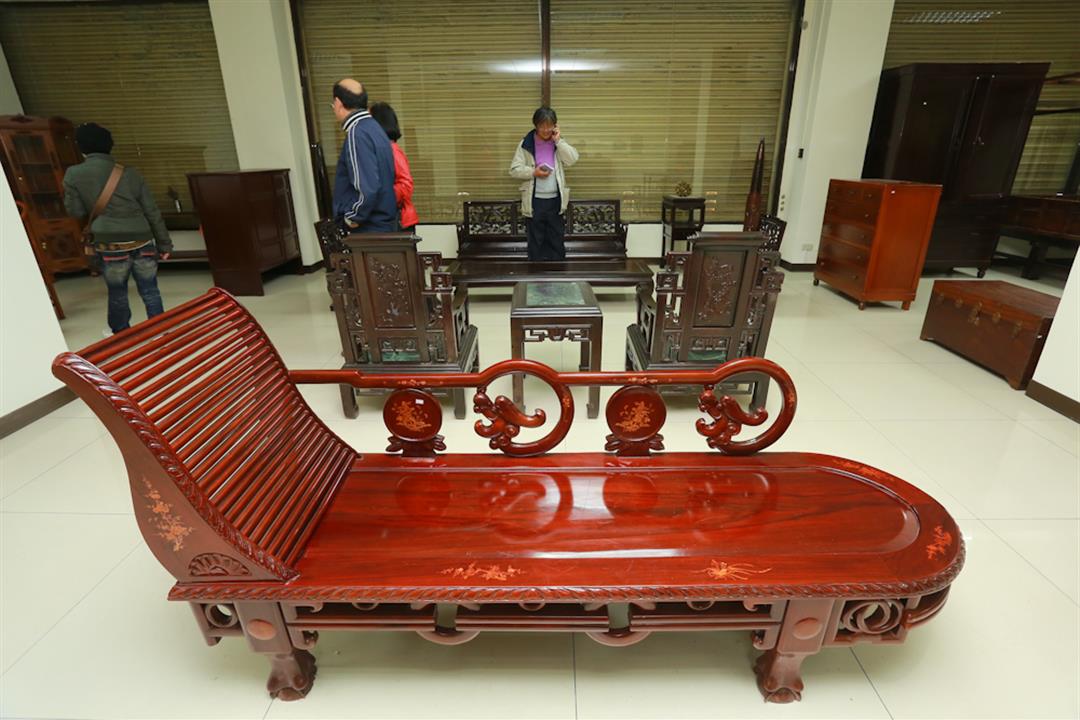Reviving the dead
To be used again, discarded goods need to be restored. Quite a few of their purchasers marvel at the exquisite work of the restorers. Who are the behind-the-scenes heroes resuscitating these aged pieces of furniture?
Arriving at the second-floor restoration workshop in Neihu, visitors are met by the sight of craftsmen busy repairing, cleaning, and applying finishing touches of paint and lacquer to used furniture.
The 30-some workers in these restoration teams were mostly plucked from the several thousand members of the city’s refuse collection and street cleaning squads.
Master carpenter Chen Jincai, 64, became an apprentice carpenter at 14. He finished his apprenticeship at 18 and joined the septic tank emptying team of the city’s environmental department at 37. His talents were wasted there, being used for nothing more challenging than repairing stall doors in public restrooms. He rediscovered his skills as a master artisan when he was hired by the recycling team’s furniture squad 10 years ago.
Chen says that rediscovering his carpentry skills while helping the environment has given him a great sense of accomplishment. Most rewarding of all is when he can save a piece of high-quality wood furniture from going to the incinerator. “Early Taiwanese furniture made from cypress has elegant lines and is very durable and resistant to insect damage. Restored, it can be used for another 50 years without any problem.”
Chen Shixian, head of the recycling team’s furniture squad, points out that restoring this old furniture isn’t difficult for the squad’s experienced carpenters. The problem is doing it in the most time- and cost-efficient manner.
First of all, there is the initial screening process at the time of selection: “You’ve got to select structurally sound furniture that still has some economic value,” Chen says. For instance, pieces of poor quality designed to have only a short life, such as furniture made from plywood, is eliminated right away.
Next, some furniture that has suffered serious damage isn’t repaired but may be torn apart for salvageable pieces such as bed planks, headboards, handles, drawer rails, copper beads and other hardware. Salvaging as much material as possible can save on expense when repairing other furniture.
What’s more, the master craftsmen often demonstrate marvelous creativity in adapting parts of antiques to new uses. For instance, beds lacking planks or missing headboards can be converted into snug benches, or stacks of bicycle wheels can be painted and turned into outdoor chairs.
To keep costs low, the furniture squad repairs rather than reupholsters leather sofas. Chen explains that purchasing newly produced leather is not in keeping with their environmental ethos. Instead, the sofa masters here carefully sanitize leather sofas and do repairs such as replacing broken feet. They may also reapply leather dyes to areas that have lost color.

Thanks to the hard work of county and municipal environmental agencies, the amount of discarded wooden furniture that is recycled has been rising year after year as environmental consciousness has taken hold in Taiwan.